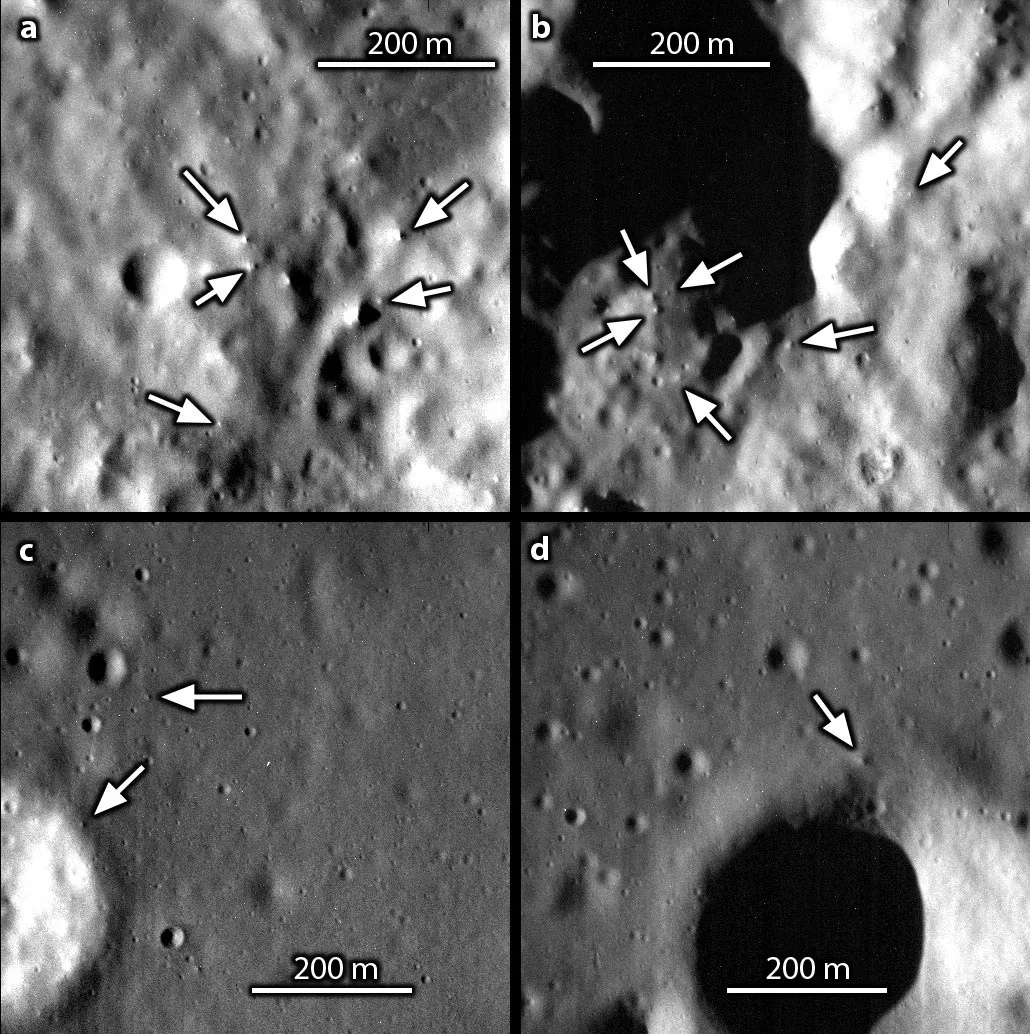Recently, scientists have received new information about the conditions on mercury, the planet closest to the sun. It is reported that an international team of planetary scientists from the United States, Russia and Finland analyzed the abundance of giant stones on mercury and the factors that determine it for the first time** The details and conclusions of the study have been published in Icarus, which specializes in the solar system and other planetary systems.

Mercury is the smallest planet in the solar system. It is slightly larger than the moon and their surfaces are similar. In order to study the giant stones on mercury, the researchers screened nearly 3000 images obtained by the narrow angle camera on NASA messenger space probe during the mercury orbit mission in 2015. They noticed that there were only 14 boulders with a size of 5 meters (smaller objects cannot be distinguished at present).
The scientists monitored the image of the moon's surface. The quality of the lunar image is much better. Therefore, in order to fully compare the "portrait" of the earth's natural satellite with that of mercury, it is necessary to "deteriorate" the quality of lunar photos to the same level.
Mikhail kreslavsky, a researcher at the University of California, said: "the comparison of materials leads us to the conclusion that boulders are found on mercury about 30 times less than on the moon. Due to the limitations of source data, this exact quantitative estimate itself is inaccurate. However, the significant relative rarity of boulders on mercury can be determined firmly and reliably."
Scientists believe that this difference is determined by three factors. The first factor is Mercury's Micro meteorite flux. Because the planet is close to the sun, its number is more than 50 times and its velocity is 1.5-5.5 times that of the flux to the moon. Tiny particles of interplanetary dust hit Mercury's boulders. They grind them like abrasive materials, almost 15 times faster than the moon.
The second factor is that Mercury has a thicker layer of Thunder Stone (loose soil) on the surface, which is the "product" of equally strong micro meteorite bombardment. Due to the thick thunder stone layer, when a space object tens of meters in size strikes mercury, the "trauma" to the planet is much smaller, and there are much less boulders from its surface. Planetary scientists believe that the erosion of boulders by particles, coupled with the effect of thicker thunderstones, may be the main reason for the small number of boulders on mercury.
The third factor is the periodic temperature change on mercury on sunny days (which is equivalent to 176 days on earth). As the closest planet to the sun, Mercury's temperature fluctuation is the largest of all planets in the solar system: from 80 to 700k.
"Huge thermal stress - 2.5 times that on the moon - causes rapid wear and tear of materials, numerous large and micro cracks, and eventually leads to the destruction of boulders on mercury. However, on the moon, boulders have a 'life' of 100 million years," said Maria gristevich, senior researcher at ural federal University and the Finnish geospatial Institute and lecturer in planetary science at the University of Helsinki.
Due to the relatively small number of boulders on mercury, scientists have determined both the rare situation of their formation and the rapid destruction process.
Gritsevich said: "our analysis is limited by the quality of most existing mercury surface images and limited high-resolution images. Research can continue according to the next mission to mercury. European Space Agency (ESA) and Japan Aerospace Exploration Agency (JAXA) The joint mission bepicolombo was launched in October 2018 and is scheduled to reach mercury in December 2025. The results of the bepicolombo mission will be very beneficial for further boulder research. In particular, if thermal stress contributes greatly to the annihilation of boulders, the inverse correlation between boulder abundance and Mercury's' extreme heat 'can be expected, which can be tested with HRIC images. "